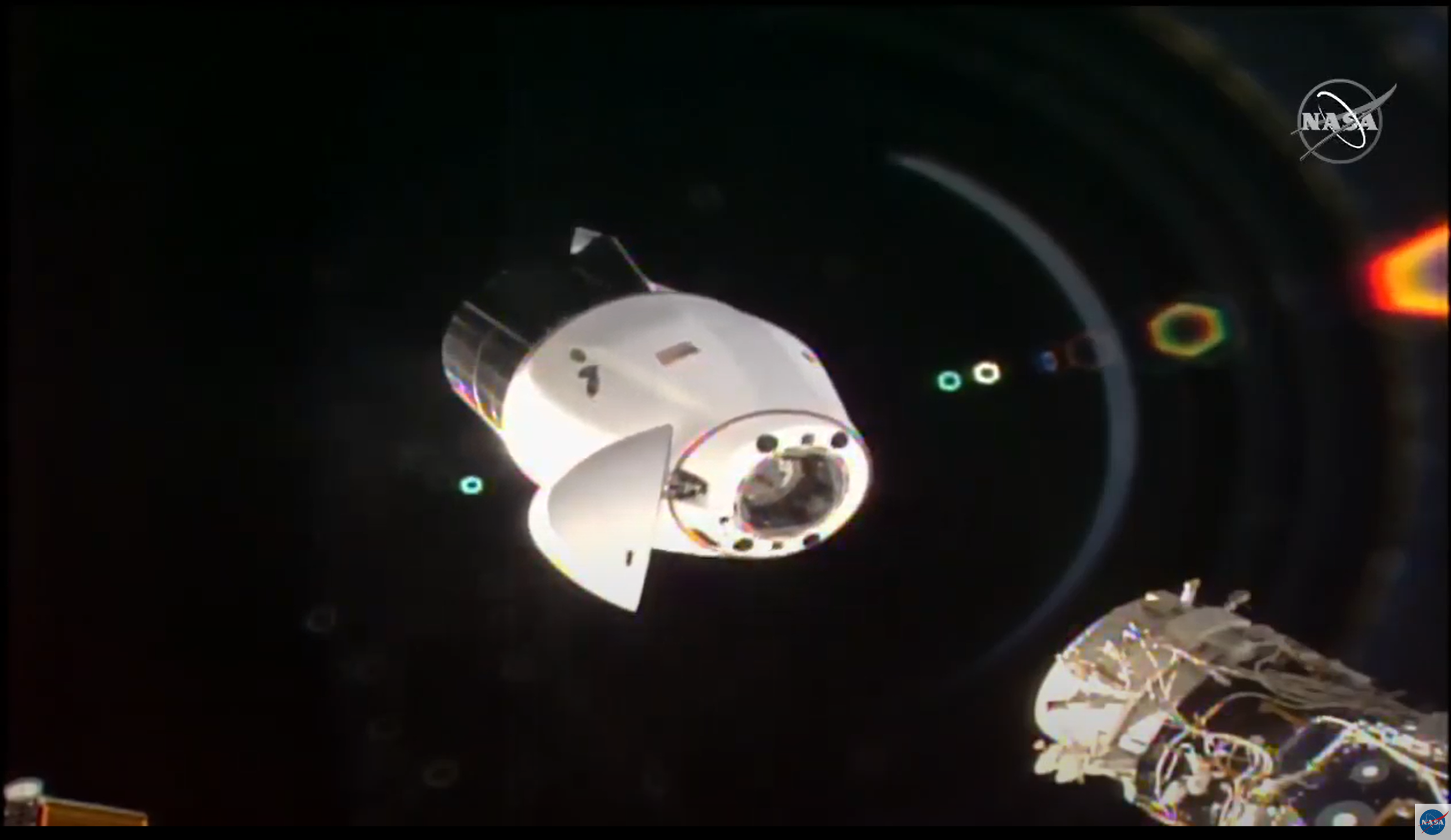
Ken Kremer – For SpaceUpClose.com & RocketSTEM
CAPE CANAVERAL, FL – Following a five week long stay and a days long delay due to poor recovery weather the first of the next generation commercial SpaceX Cargo Dragon supply ships successfully undocked from the International Space Station (ISS) Tuesday, Jan, 12, and is on course to the targeted splashdown zone west of Tampa, Florida in the Gulf of Mexico, Wednesday evening loaded with some 4400 pounds of critical NASA science experiments and other cargo for return to Earth.
The two vehicles separated while they were traveling some 250 miles (400 km) above Earth at 17,500 mph Tuesday morning after the planned undock was scrubbed 24 hours earlier Monday morning due to poor sea states in both the Atlantic and Gulf recovery zones.
The splashdown off the Florida coast will enable a rapid capsule recovery and return of time critical and sensitive research specimens to NASA and the science teams.
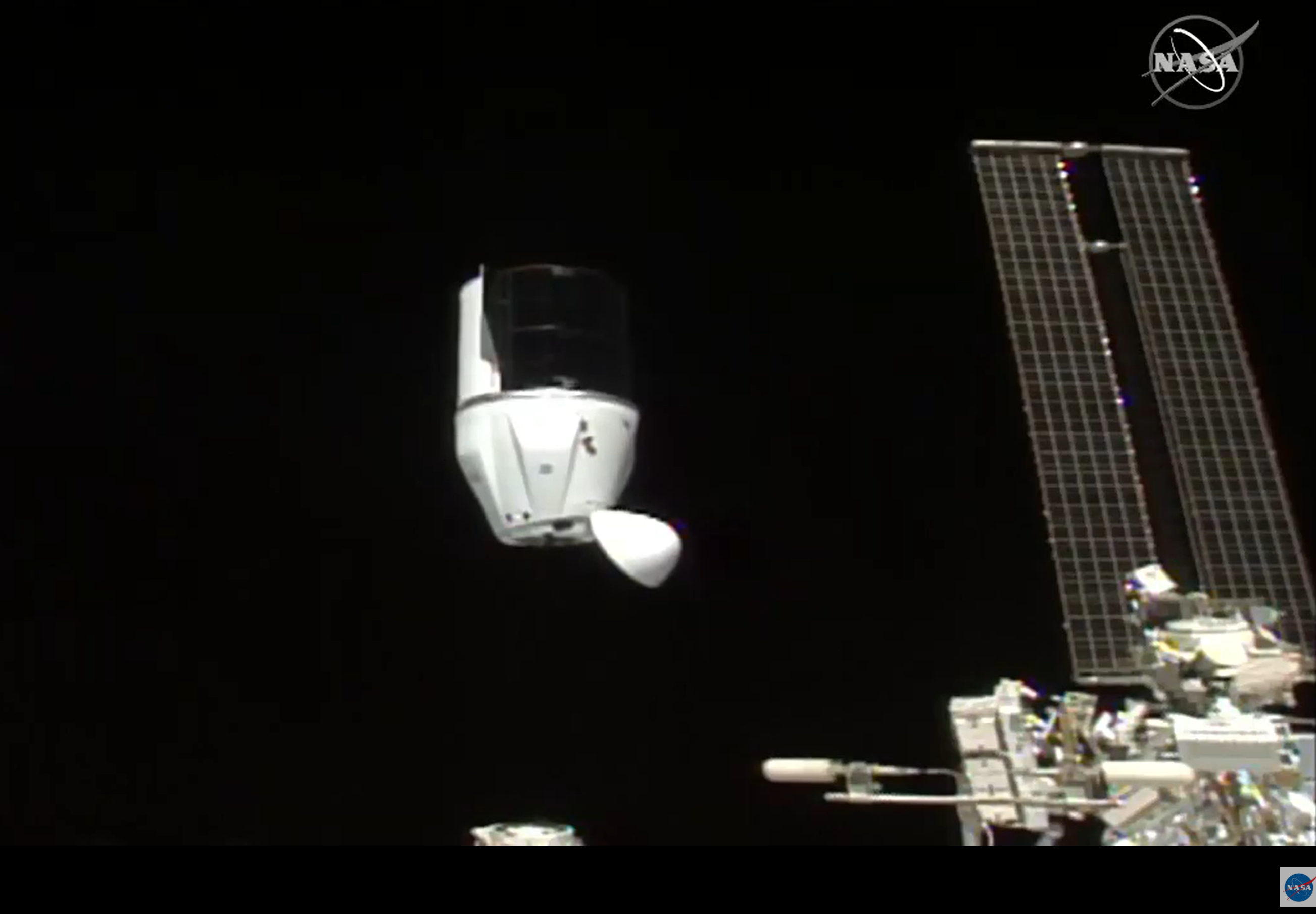
With NASA Expedition 64 ISS astronaut Victor Glover monitoring aboard ISS the SpaceX CRS-21 Cargo Dragon spacecraft undocked from the International Docking Adapter (IDA) on the station’s space-facing port of the Harmony module at 9:05 a.m. EST (1405 GMT) Tuesday, Jan. 12.
It marked the first undocking of a U.S. commercial cargo craft from the orbiting lab complex.
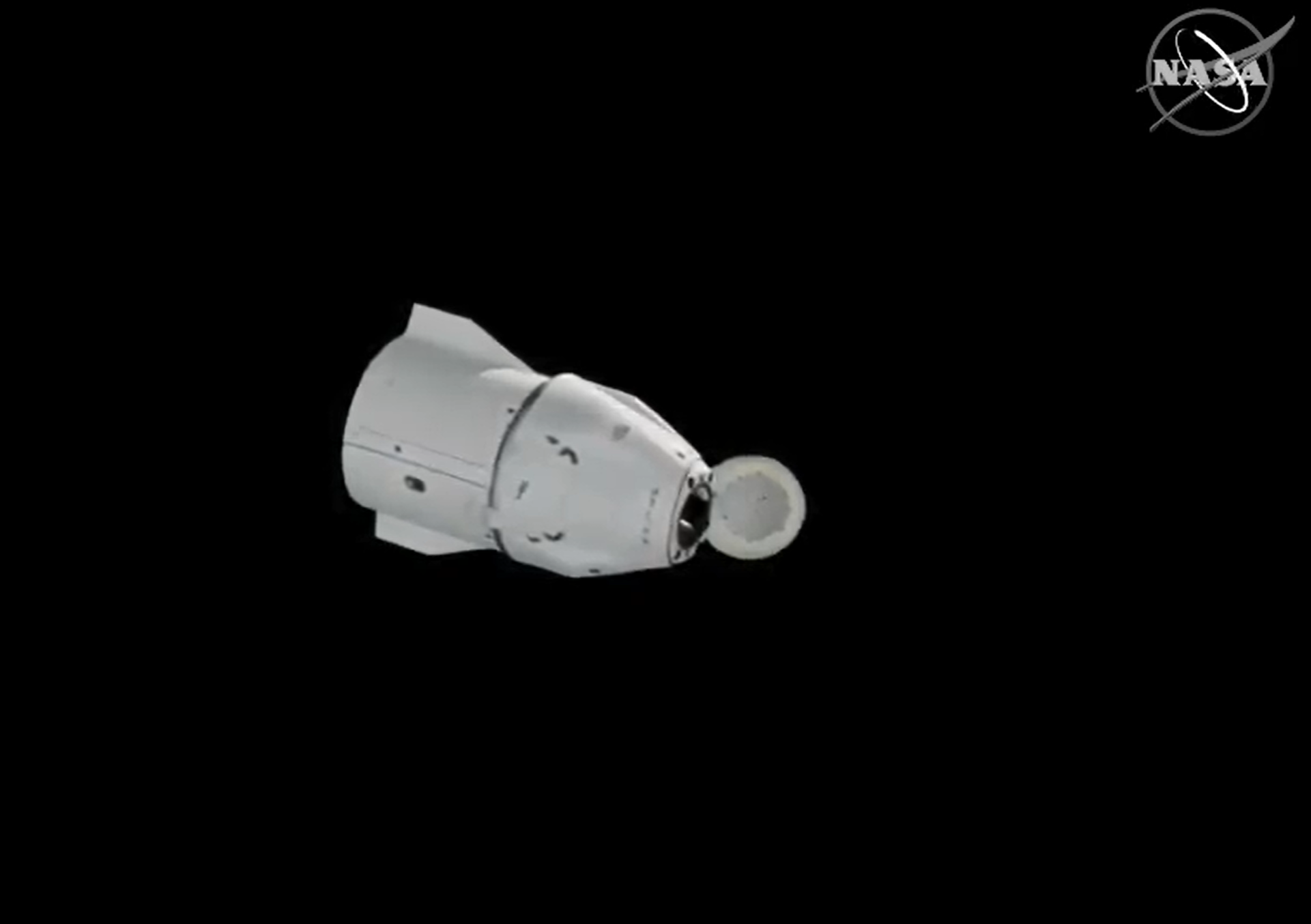
The departure was carried live on NASA TV:
“The upgraded @SpaceX cargo Dragon successfully undocked from the @Space_Station at 9:05am ET & is on its way back to Earth for splashdown on Jan. 13, west of Tampa off the coast of Florida. @ISS_Research will be delivered to researchers at @NASAKennedy: go.nasa.gov/35yfHa6″
🐉 The upgraded @SpaceX cargo Dragon successfully undocked from the @Space_Station at 9:05am ET & is on its way back to Earth for splashdown on Jan. 13, west of Tampa off the coast of Florida. @ISS_Research will be delivered to researchers at @NASAKennedy: https://t.co/Dqltf5ME8X pic.twitter.com/esYxtUmBfH
— NASA (@NASA) January 12, 2021
Watch this departure video from NASA:
“Separation confirmed. At 9:05am ET, the @SpaceX cargo Dragon undocked from the @Space_Station, carrying @ISS_Research on its journey home to Earth,” NASA tweeted.
Separation confirmed. At 9:05am ET, the @SpaceX cargo Dragon undocked from the @Space_Station, carrying @ISS_Research on its journey home to Earth. pic.twitter.com/mOOZy4G4zO
— NASA (@NASA) January 12, 2021
Previous 1st generation SpaceX cargo Dragon spacecraft were attached and removed from the space station using the station’s robotic Canadarm2.
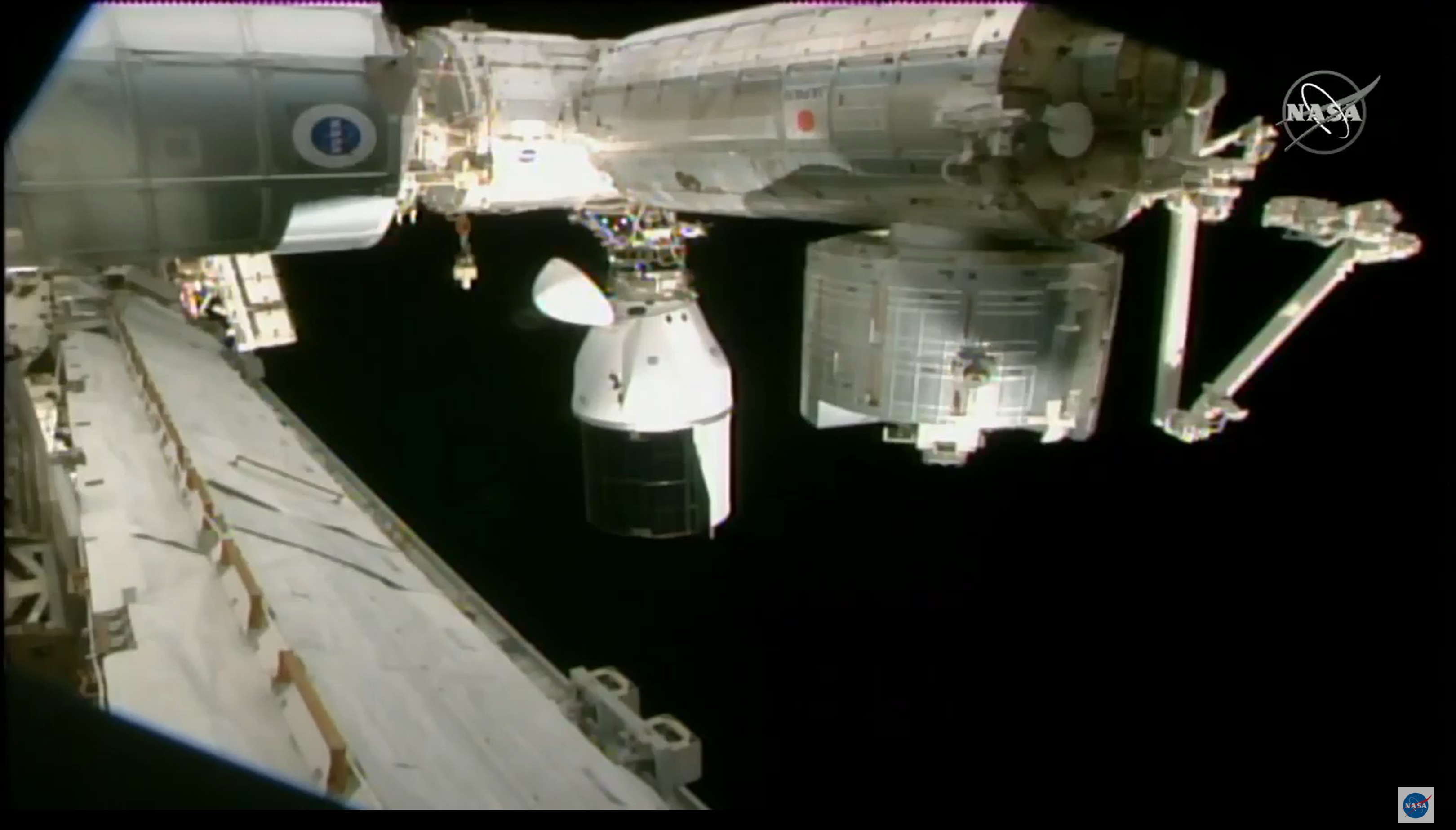
Dragon then fired its thrusters to complete a series of three departure burns to exit the keep out zone and move a safe distance from the space station during the next 36 hours.
Separation confirmed! Dragon performing 3 departure burns to move away from the @Space_Station pic.twitter.com/G27ohWvnXj
— SpaceX (@SpaceX) January 12, 2021
NASA said that on Wednesday, Jan. 13, Dragon will conduct a deorbit burn at 7:37 p.m. to begin its re-entry sequence into Earth’s atmosphere.
Dragon is expected to splash down Wednesday night west of Tampa off the Florida coast about 8:27 p.m. ET (0227 GMT Thursday). The splashdown will not be broadcast.
NASA and SpaceX personnel will be on hand to retrieve the cargo craft using the SpaceX fleet including the GO Navigator recovery ship outfitted with a hoisting crane and heliport.
The helicopter will be loaded with the most critical and sensitive science specimens and cargo to enable rapid return to the agency’s Kennedy Space Center’s Space Station Processing Facility (SSPF) in Florida.
The science experiments include research into microgravity effect on cardiovascular cells, growth of 3D organ buds from human stem cells, experimental fiber optics, bacterial gene growth and rodent research with live mice.
“I am excited to finally see science returning here again because we can get these time sensitive experiments into the lab faster than ever,” says Kennedy Space Center utilization project manager Jennifer Wahlberg.
“Sending science up to space and then receiving it again on the runway was definitely something in the shuttle days that we really took pride in, and being able to rejoin that process is great.”
TONIGHT ➡️ @SpaceX's cargo Dragon capsule returns to Earth
Upon arrival, time-critical @ISS_Research will be delivered to Kennedy Space Center and returned to the hands of researchers. Learn more about these science experiments: https://t.co/4ykM1vptIE pic.twitter.com/9FUSdzHpQz
— NASA's Kennedy Space Center (@NASAKennedy) January 13, 2021
“The upgraded cargo Dragon capsule used for this mission contains double the powered locker availability of previous capsules, allowing for a significant increase in the research that can be carried back to Earth,” says NASA.
“Splashing down off the coast of Florida enables quick transportation of the science aboard the capsule to the agency’s Kennedy Space Center’s Space Station Processing Facility, delivering some science back into the hands of the researchers as soon as four to nine hours after splashdown. This shorter transportation timeframe allows researchers to collect data with minimal loss of microgravity effects. Previous cargo Dragon spacecraft returned to the Pacific Ocean, with quick-return science cargo processed at SpaceX’s facility in McGregor, Texas, and delivered to NASA’s Johnson Space Center in Houston.”
Cargo Dragon CRS-21 launched on a veteran 4x recycled ‘flight-proven’ Falcon 9 on the 21st Commercial Resupply Services mission, dubbed CRS-21, to the International Space Station, under the auspices of NASA’s commercial cargo program.
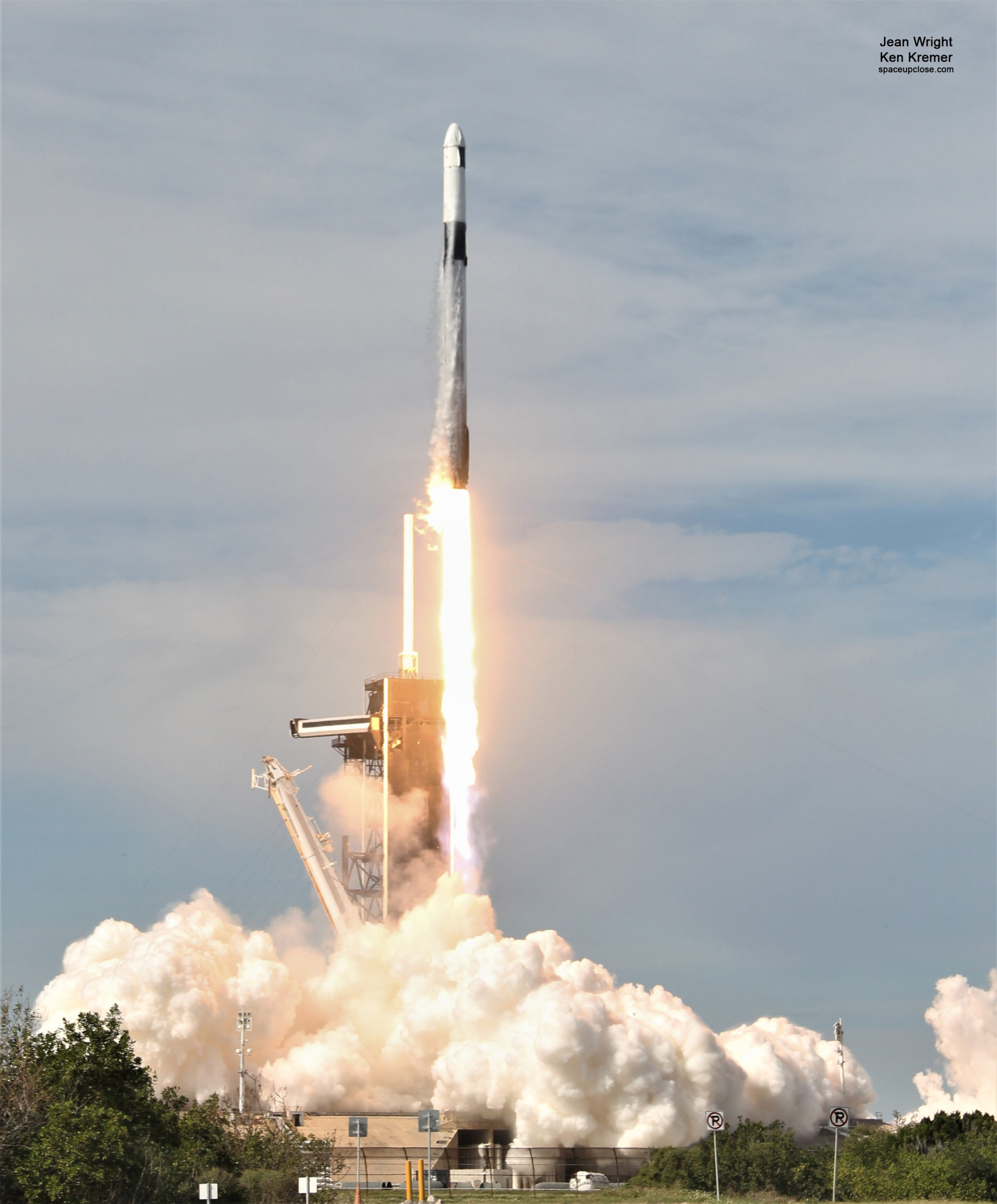
Liftoff of the SpaceX Falcon 9 rocket carrying the Cargo Dragon supply ship on the CRS-21 resupply mission to the ISS took place at 11:17 a.m. EST (1617 GMT), Sunday, Dec. 6, from seaside Launch Complex 39A on NASA’s Kennedy Space Center (KSC) in Florida.
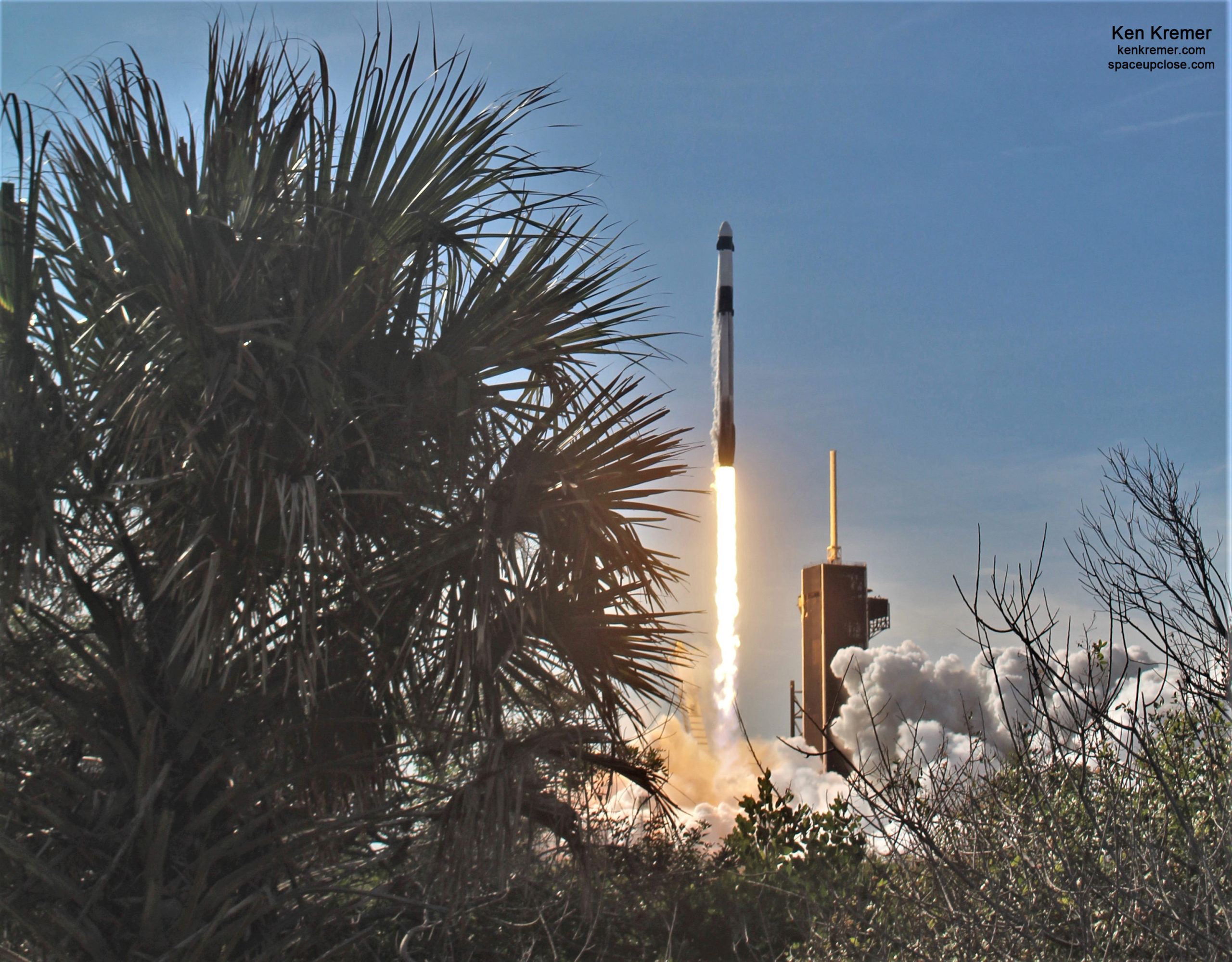
Among the science experiments are using microbes to mine asteroids, examining how changes in gravity affect the heart at the cellular and tissue level on tissue chips and the effect of microgravity on brain organoids, as well as the commercial Nanoracks airlock filling nearly the entire exterior cargo volume in the Dragon trunk section.
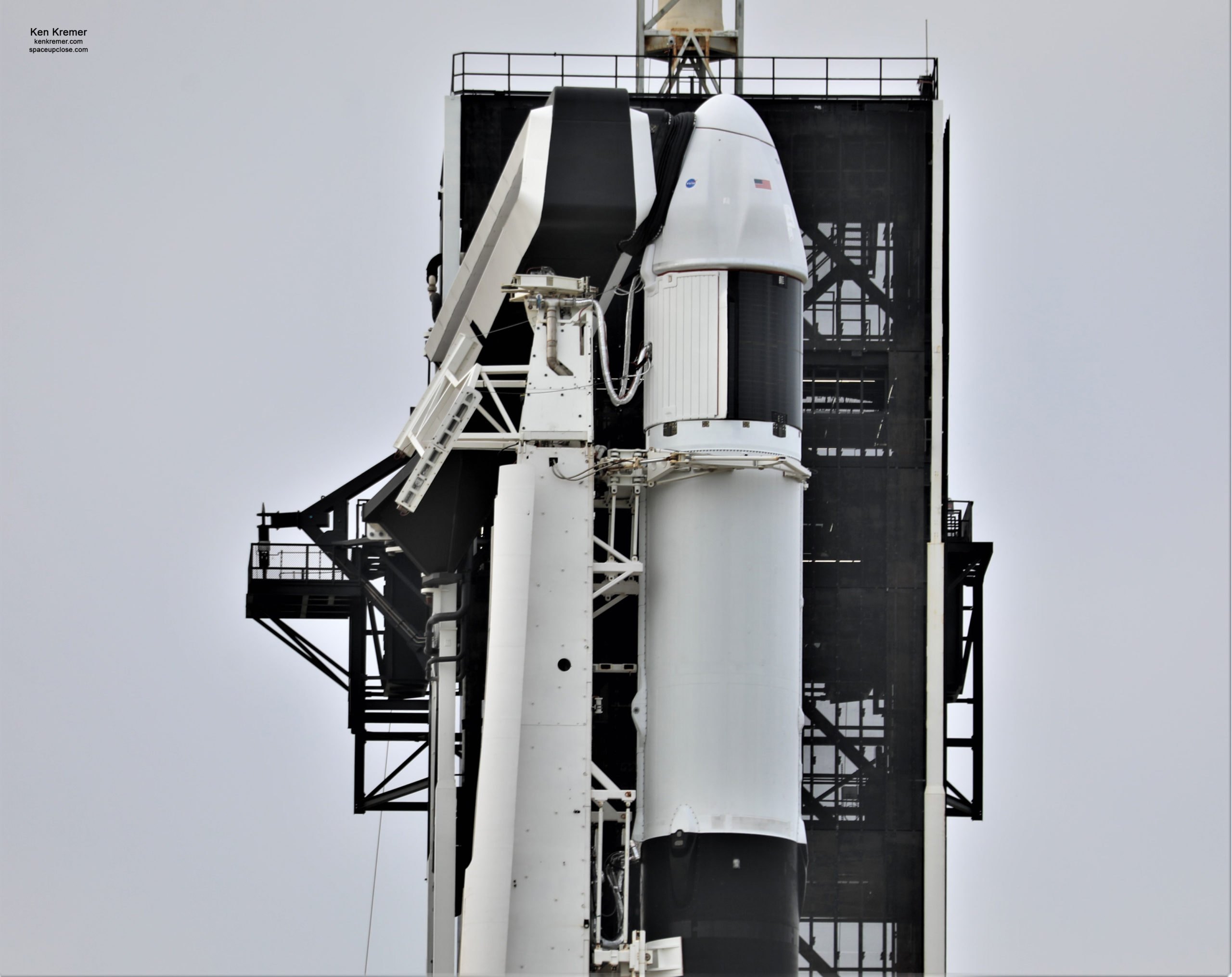
The privately funded Nanoracks Bishop Airlock is a new commercial platform 5 times bigger than the Japanese airlock on the Japanese Experiment Module (JEM) already in use. It will vastly increase the ability to deploy more cubesats and house externally mounted research payloads.
It arrived at the station just over 24 hours later and achieving the first autonomous docking of a U.S. commercial cargo resupply spacecraft.
Four visiting vehicles remain at the ISS following departure of SpaceX Cargo Dragon and Northrop Grumman Cygnus.
“Four spaceships, the @SpaceX #CrewDragon and three @Roscosmos spaceships, are docked at the station after the departure of the SpaceX #CargoDragon today,” NASA tweeted with a schematic.
Four spaceships, the @SpaceX #CrewDragon and three @Roscosmos spaceships, are docked at the station after the departure of the SpaceX #CargoDragon today. More… https://t.co/Hl3lsvCegM pic.twitter.com/5l2l1KGV32
— International Space Station (@Space_Station) January 13, 2021
Read my commentary about the SpaceX Cargo Dragon departure at Florida Today and WKMG CBS 6 Orlando TV News
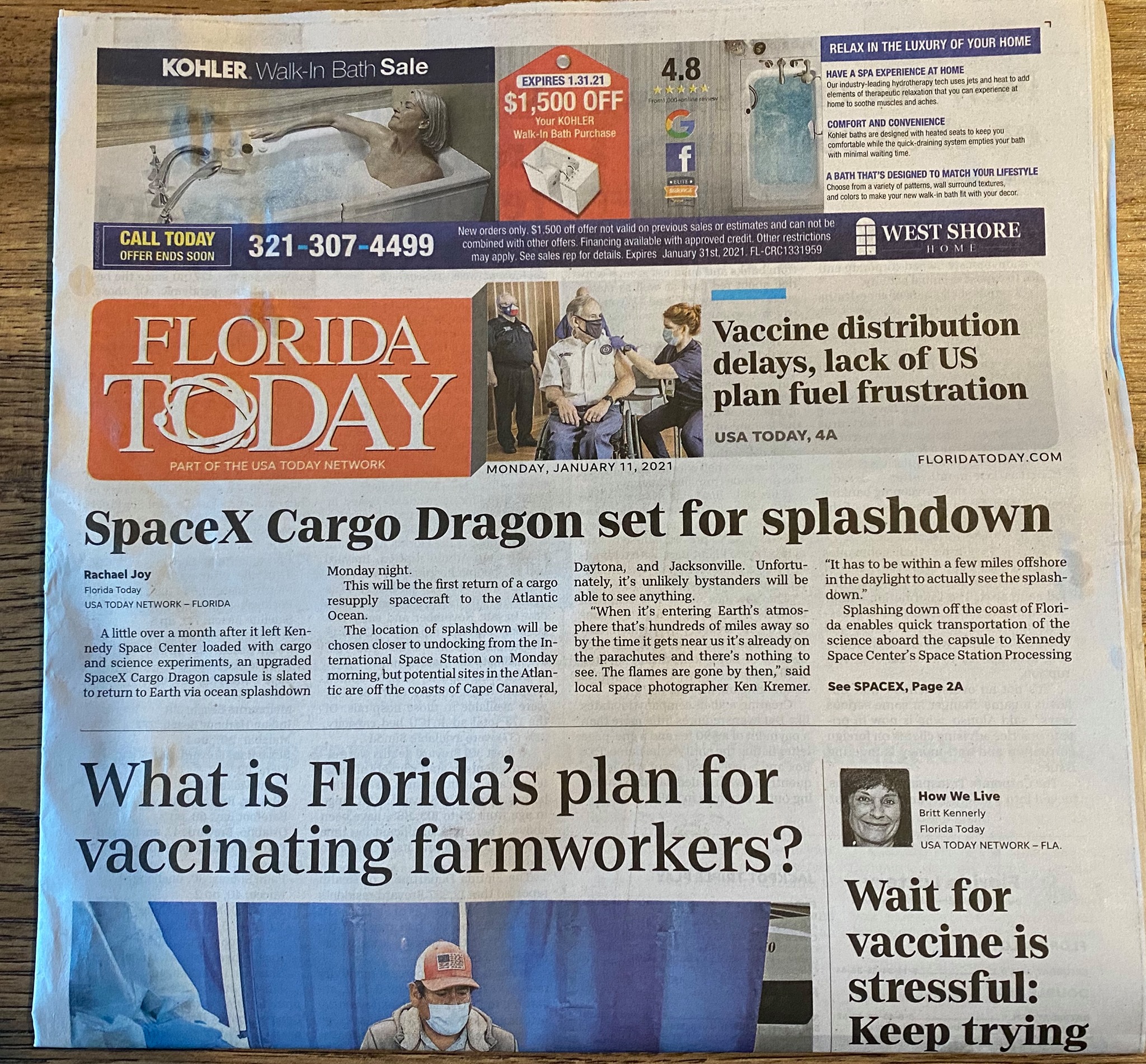
https://www.clickorlando.com/news/local/2021/01/11/spacex-cargo-dragon-spacecraft-set-to-splashdown-off-florida/
Watch Ken’s continuing reports about SpaceX Cargo and Crew Dragons, Starlink, NASA Commercial Crew and Artemis and onsite for live reporting of upcoming and recent SpaceX and ULA launches including Crew-1, Starlink, X-37B, Solar Orbiter, Mars 2020, NRO spysats and more at the Kennedy Space Center and Cape Canaveral Space Force Station.
Stay tuned here for Ken’s continuing Earth and Planetary science and human spaceflight news: www.kenkremer.com –www.spaceupclose.com – twitter @ken_kremer – email: ken at kenkremer.com
Dr. Kremer is a research scientist and journalist based in the KSC area, active in outreach and interviewed regularly on TV and radio about space topics.
………….
Ken’s photos are for sale and he is available for lectures and outreach events
Please consider supporting Ken’s work by donating at Patreon:
https://www.patreon.com/kenkremer
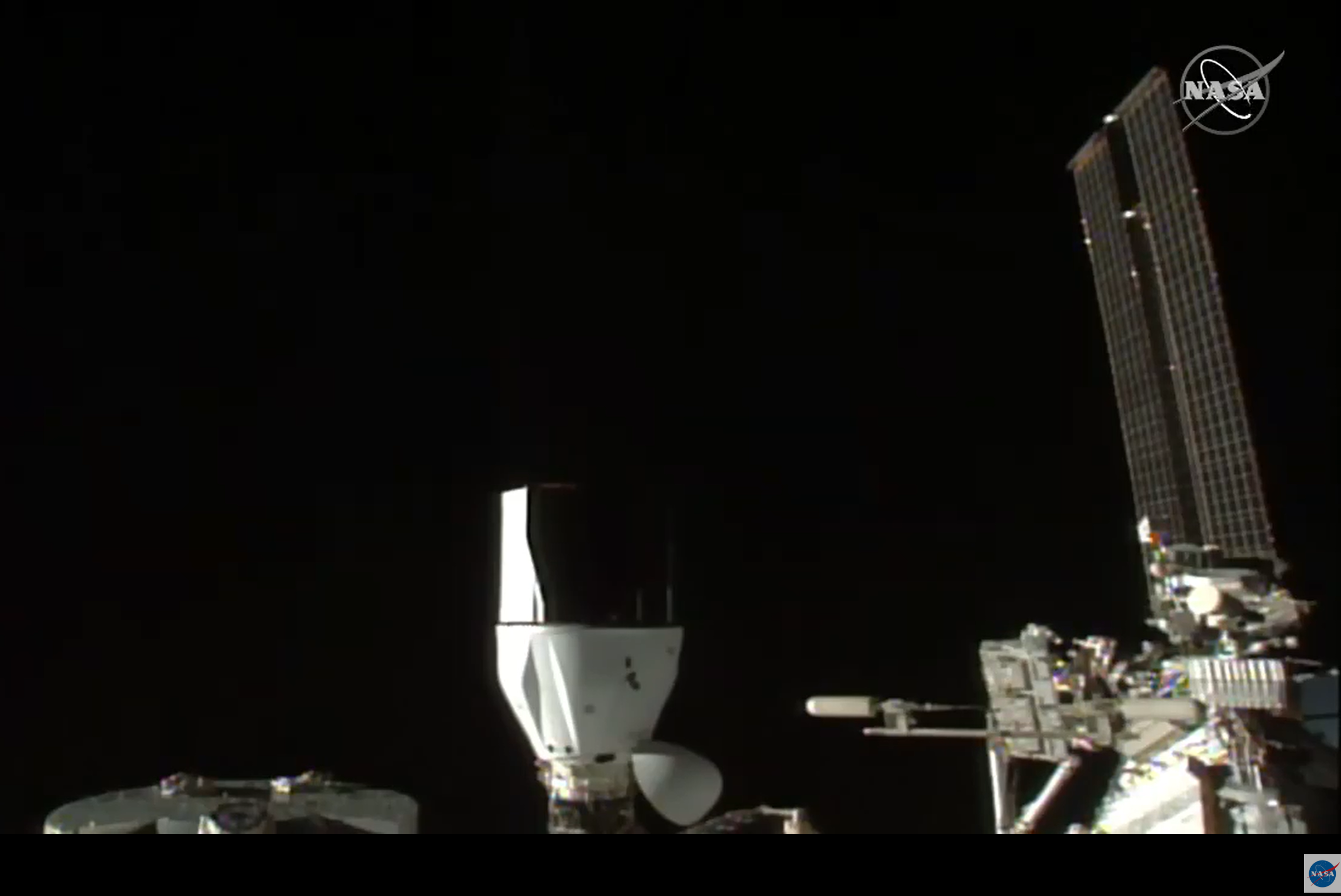
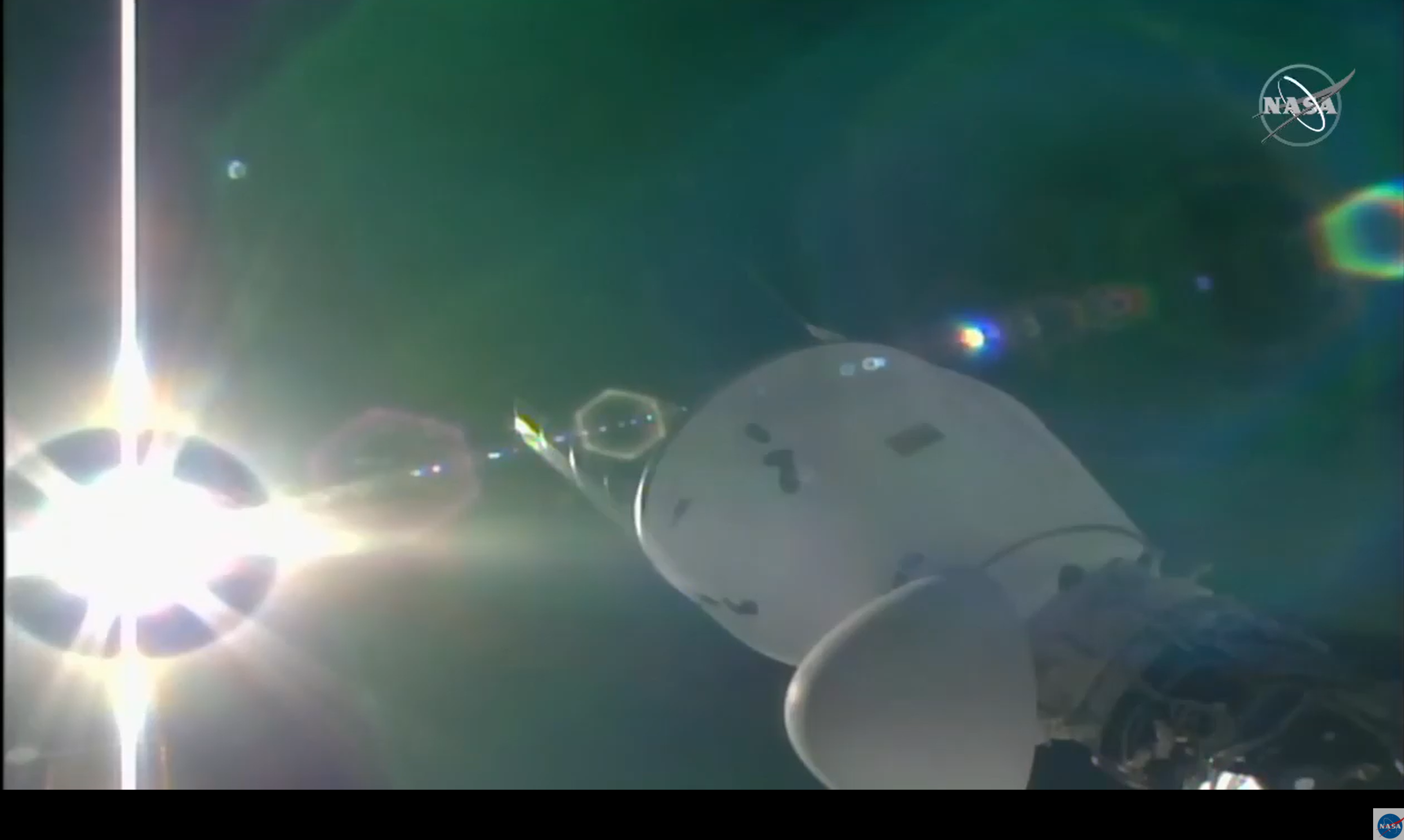
x



